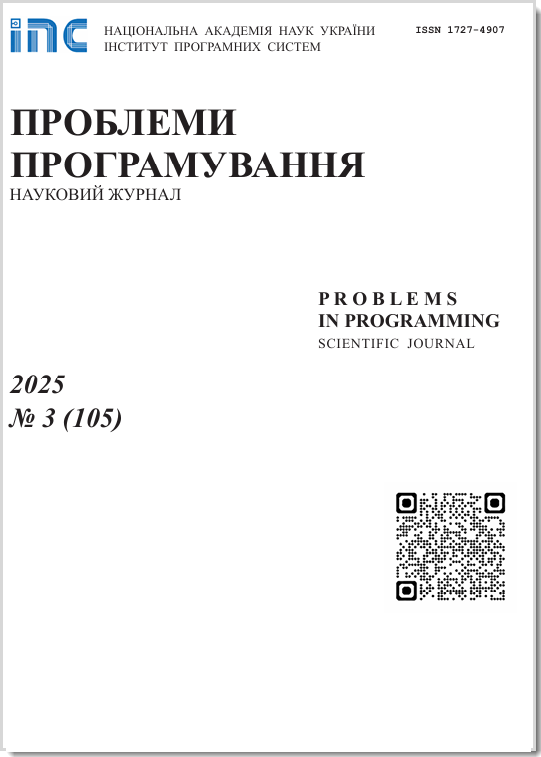A resource limited parallel program model
Abstract
Modern parallel programs run in a complex, resource-limited environment, and this raises the new requirements for resource consumption and execution stability of long running processes. In order to help with checking resource constraints for such parallel software a resource-limited parallel program formal model was developed. The model expresses the resource and time constraints and is suitable both for fine grained and coarse-grained parallelism in programs. For higher degrees of parallelism (at independent procedure level, bigger loop iterations, large computing blocks for graphics, video and neural network processing) the interpretation of formal model can be done in run-time and avoid dead locks and hangs during resource allocation. We are discussing several modern software frameworks that are able to integrate the functionality to interpret the model and check the feasibility of the set of parallel programs running on hardware simultaneously with resource and time limitations. Real world tasks – neural network inference, video processing, general purpose computing on GPU – which get benefits after enabling such models - are discussed.
Problems in programming 2019; 4: 03-10
Keywords
Full Text:
PDFReferences
Yangqing J., Shelhamer E., Donahue J., Karayev S., Long J., Girshick R., Guadarrama S., Darrell T. (2014) Caffe: Convolutional Architecture for Fase Feature Embedding. ArXiv preprint: arXiv:1408.5039
Redmon J. (2013) [Online]. Darknet: Open Source Neural Networks in C. - Available from https://pjreddie.com/darknet/
Abadi M., Barham P., Chen J., Chen Z., Davis A., Dean J., Devin M., Ghemawat S., Irving G., Isard M. & others (2016). TensorFlow: A System for Large-Scale Machine Learning. OSDI. P. 265-283.
Bradsky G., Kaehler A. Learning OpenCV - O'Reilly, 2008. P. 1.
Taymans W., Baker S., Wingo A. (2018) GStreamer Application Development 1.10.1. P. 164. 12th Media Services.
DeepStream [Online] - Nvidia DeepStream Software Development Kit - Available at https://developer.nvidia.com/deepstream-sdk
Peter Hui and Satish Chikkagoudar. (2012) A Formal Model for Real-time Parallel computation. In Proc of FTSCS-2012. P. 39-53. CrossRef
Ahlem Triki, Jacques Combaz. (2013) Model-Based implementation of Parallel Real-Time Systems. Verimag Research Report TR-2013-11 CrossRef
Wilhelm R., Altmeyer S., Burguiere C., Grund D., Herter J., Reineke J., Wachter B., Wilhelm S. Static timing analysis for hard real-time systems. In Barthe G. and Hermenegildo M.V., eds., WMCAI. 2010. Vol. 5944 of LNCS. P. 3-22. Springer. CrossRef
Abdellatif T., Combaz J., Sifakis J. Model-based implementation of real-time applications. In Carloni L.P. and Stavros Tripakis, eds. EMSOFT. 2010. P. 229-238. CrossRef
Basu A., Bogza M., Sifakis J. Modeling heterogeneous real-time components in BIP. In SEFM. 2006. P. 3-12. IEEE Computer Society.
Baboulin M., Demmel J., Dongarra J., Tomov S., and Volkov V. Enhancing the Performance of Dense Linear Algebra Solvers on GPUs (in the MAGMA Project) , Austin, TX, The International Conference for High Performance Computing, Networking, Storage, and Analysis (SC08), Nov. 2008.
CUDA [Online] - Available at https://developer.nvidia.com/cuda-zone
OpenCL [Online] - Available at Khronos Group: https://www.khronos.org/opencl/
Xu Y.G. and Cao S.X. Real-Time Video Acquisition and Frame Compression Processing Technology Based on FFmpeg, Applied Mechanics and Materials. 2014. Vols. 631-632. P. 494-497. CrossRef
Michael Welzl. Adaptive Multimedia Communication over Satellite Routed IP". In ICC 2000 (International Conference on Communications - IEEE Communications Society), New Orleans, Louisiana, USA, 18-22 June 2000.
DOI: https://doi.org/10.15407/pp2019.04.003
Refbacks
- There are currently no refbacks.




